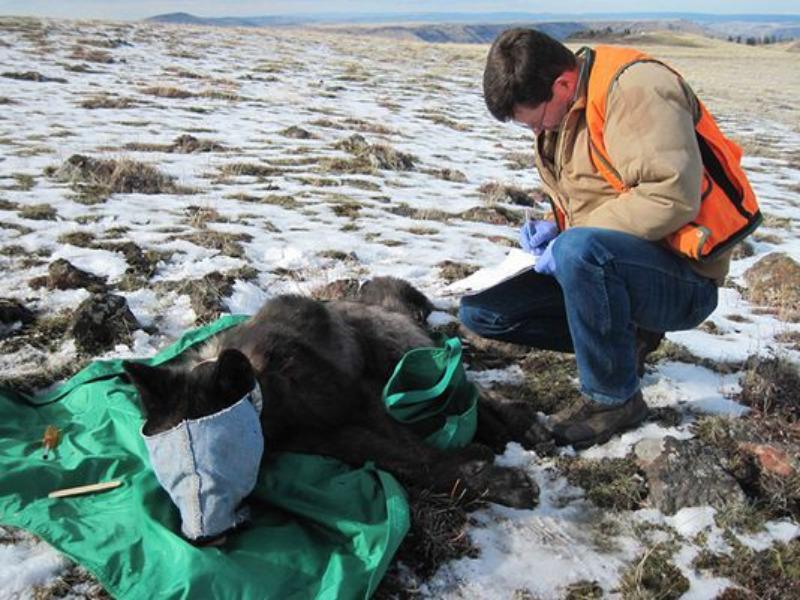
An ODFW biologist in the process of collaring wolf OR33, a 2-year-old adult male from the Imanaha Pack. Feb. 25,2015.
Oregon Department of Fish and Wildlife
Wildlife officials are reworking Oregon’s Wolf Management Plan, which governs how the state’s fragile wolf population is protected and conflicts with humans are minimized.
Here are three questions (and answers) to bring you up to speed on what’s happening and why.
Why a new wolf plan?
Oregon is required to evaluate and update its Wolf Management Plan every five years. These updates usually reflect the latest scientific and management information for gray wolves, as well as the economic and environmental concerns brought forward by the public.
The last time this happened was in 2010. The Oregon Fish and Wildlife Commission delayed the current review while deciding to whether to remove the gray wolf from the Oregon Endangered Species List (which it did in 2015).
Now the Commission is considering a new draft Wolf Management Plan, and because the issue of wolf conservation elicits such strong reaction, the public participation in the process will likely be high.
Why does it matter?
The Wolf Plan is a powerful document. It reflects the state of Oregon’s enumerated philosophy on what level of protections gray wolves should have. This is largely determined by population levels — the number wolves, packs and pups produced. In 2016, ODFW estimates there were a minimum of 112 wolves in the state (up two from 2015).
This year the population surpassed a current Wolf Plan milestone that allowed a change in protection levels in the eastern part of the state. The change gave wildlife officials more latitude to kill or have problem wolves killed. Problem wolves are often linked to chronic livestock depredation.
The new draft Wolf Management Plan acknowledges that these conflicts aren’t going away:
“In Oregon, it is expected that an increasing and expanding population of wolves will result in more, not less, conflict in the future.”
Planning for and managing this conflict is a significant part of the Wolf Plan.
The draft proposes more stringent standards for giving wolves this “problem” designation. This is something that likely won’t sit well with ranchers – especially following a year with the highest confirmed number (24) of livestock losses to wolves since they were reintroduced in the state.
Despite the higher threshold, wolf advocates worry that the new draft plan leaves too much leeway for the state to allow wolf hunting in the future.
The Wolf Plan takes about $800,000 every two years to implement. About 80 percent of that comes from the federal government.
What's the next step?
The Oregon Fish and Wildlife Commission will hear a presentation on the draft Wolf Management Plan at its meeting Friday, April 21 in Klamath Falls. The public is encouraged to provide comments at the meeting.
The commission will hold a similar meeting May 19 in Portland.
There isn’t a date set for a commission vote on the draft plan.
